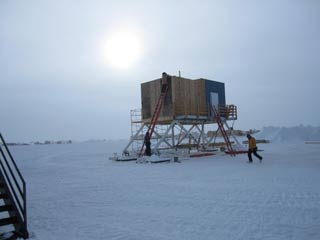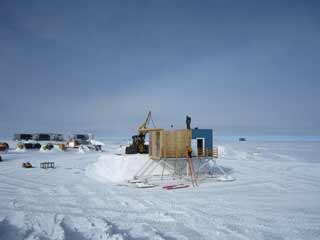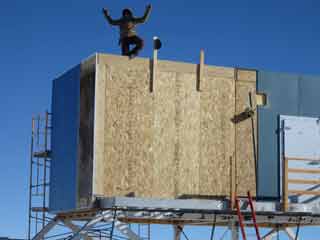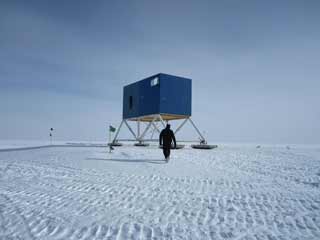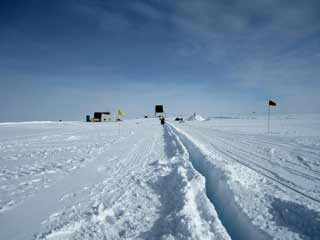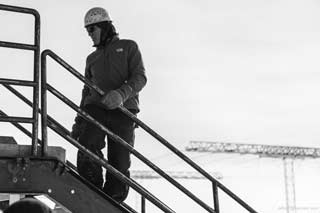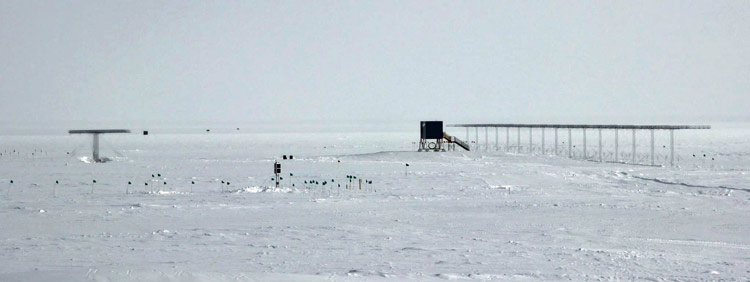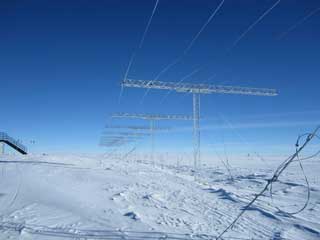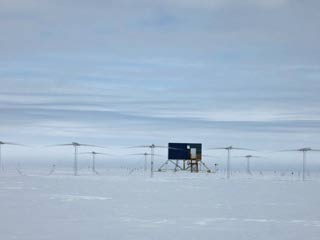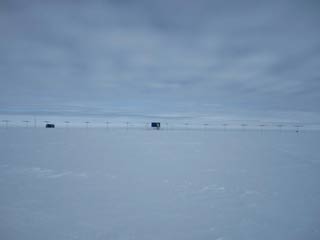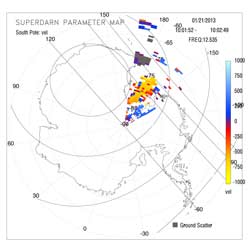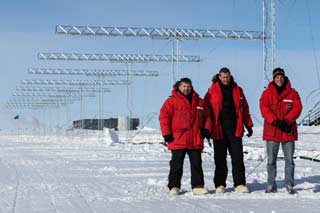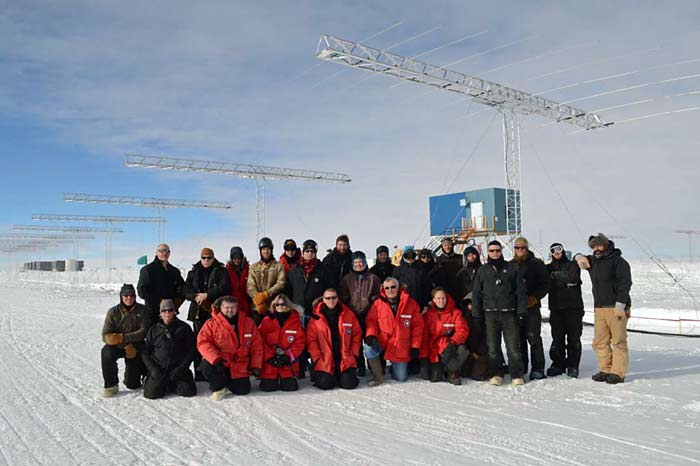2012-13 Photos - The SuperDARN project
|
SuperDARN, or the Super Dual Auroral Radar Network, consists of over 20 HF and VHF radars looking at the polar regions...they're in places like Kodiak, Inuvik, and Goose Bay (where the project originated in 1983) in the Northern Hemisphere, and Halley and McMurdo in Antarctica (list) (archive site, links are dead). Briefly, the project is looking at ionospheric irregularities to determine convection patterns. It searches for hazards in space weather in hopes of early detection and warning of super-charged particles that may disrupt power grids and communications. Its antenna arrays emit pulses of high energy at frequencies between 8 and 20 MHz, and the system detects and analyzes the reflected radiation. For all of the rest of the technical stuff, I defer to the detailed description in the 1995 paper by R. A. Greenwald et al referenced on the project information page (which is no longer online). The project was being considered for Pole during my 2005 winter, but there was intense concern from some of the other Pole project principal investigators...namely that the radar transmissions would interfere with the sensitive data being collected by IceCube and other projects in the dark sector, where the project was originally to be sited. So...now it seems that this project finally got funding...and it now consists of an antenna array roughly on the east side of the fuel/LO arches, past where Skylab and some of the old vaults used to be. The former SPASE-2 building (which we last saw being towed from the project site to the building berms in 2009-10) was revamped and expanded to serve as the project control building: | |
|
And by the beginning of the new year, the antennas had been almost completely assembled, although the electronics hadn't arrived yet. But by mid-January... | |
|
Here's a panorama of the completed array by IceCube w/o Felipe I. Pedreros Bustos); it shows both rows of antennas. Low-power testing began on 18 January--the initial effort was to confirm that the signals were not interfering with other station projects. It officially went into operation with first light on 21 January. | |
|
Like many of the newer projects, there's a significant international consortium of participants. The US teams at Pole this season were from the University of Alaska Fairbanks (UAF) Geophysical Institute, Johns Hopkins University (Applied Physics Laboratory), and Virginia Tech. | |
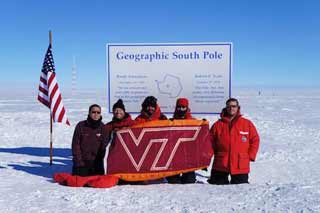 Here's the team from Virginia Tech: Zhonghua Xu, Chad Fish, Karthik Venkataramani, Hyomin Kim, and Adam Reynolds, at the Pole (photo: Chad Fish) (source page). |
|
|
The above photos are from Joe Crane unless otherwise noted. Some are by Jeffrey Donenfeld (JD), one is by Weeks Heist (WH); check out his blog post on this project for more information and photos! Also underway in the dark sector, the next phase of the Askaryan Radio Array. | |
